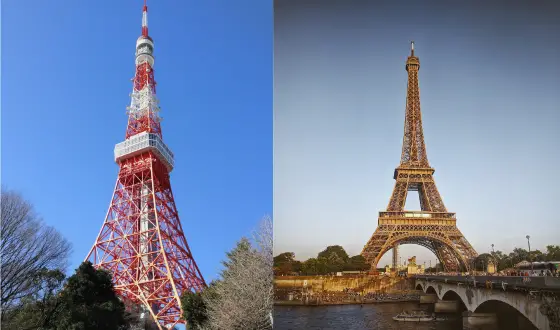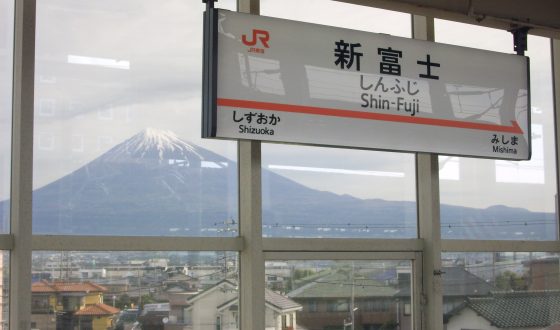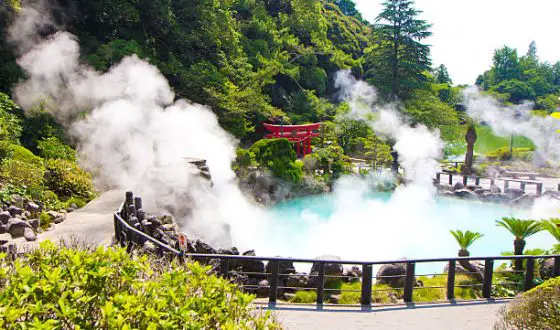Japanese Bathrooms And Things You Haven’t Known
Most people underestimate the importance of a well-designed and comfortable bathroom while in Japan, bathrooms are built with an emphasis on comfort as well as convenience. Japanese bathrooms are rather the place of rest and relaxation than simply washing off. You may feel it surprised, but people here spend at least 30 minutes a day soaking in hot tubs.
A completed guide about Japanese bathrooms
Japanese bathroom designs
Japanese shower as well as its rituals play a vital role in Japanese tradition. The indulgent aspect of showering appears to be focused, not only at home but also at public bath-houses (sento) and at hot springs (onsen).
Layout
For many Japanese, showering is done everyday before heading to bed, so the bathroom is designed in the way to best eliminate stress and refresh the mind. Modern and minimalist style is widely applied in Japanese bathroom design. In an attempt to create a calm and pleasing space, people would prefer natural or neutral color, smooth granite surfaces, and wooden appliances.
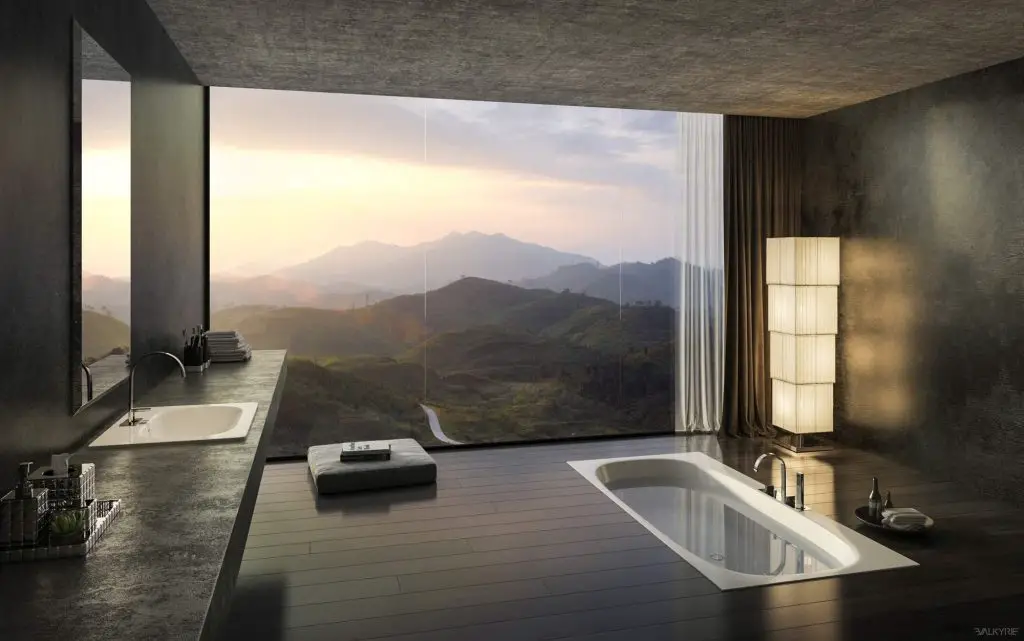
A Japanese-style bathroom has a clear focus on relaxation and hygiene
While considering the cleanliness of bathrooms, the typical floor covering made of cotton or polyester now are usually replaced by cypress timber or bamboo mats that radiate faint scent and at the same time, have the antibacterial effect.
Structure
Traditional Japanese bathroom is divided into two parts: the undressing area which is usually equipped with a vanity and a sink, and the wetroom. These two spaces separate from each other by a glass door. The toilet is usually situated in another room, as it quite frowned on to have the bathroom in the very same area where you get tidy as well as relax.
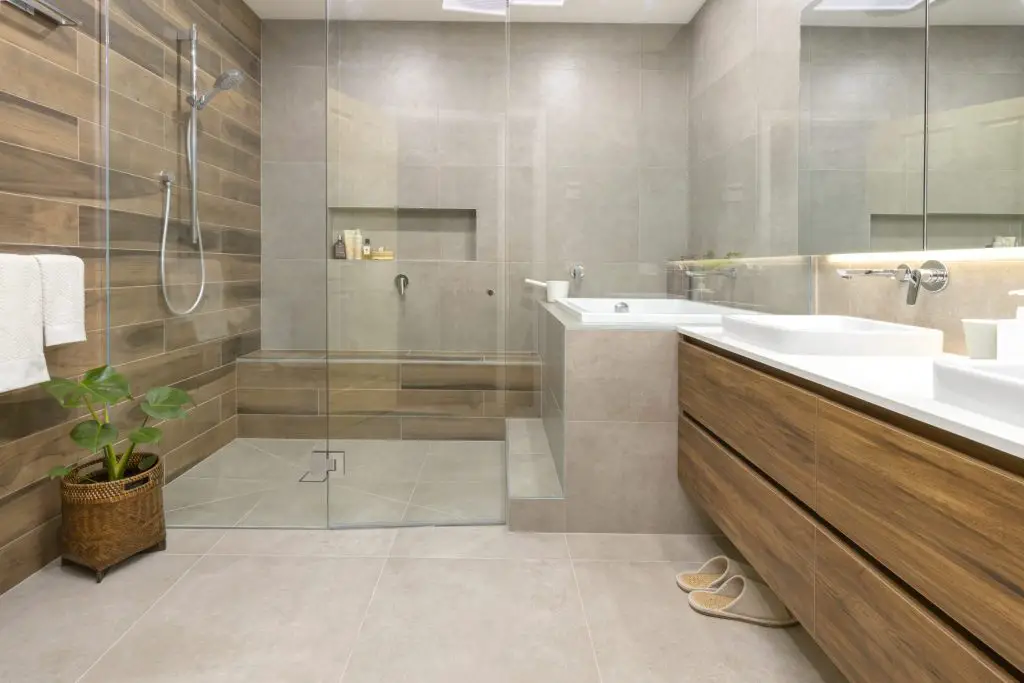
Japanese bathrooms set-up is quite different from Western style
Wetroom
The wetroom is a fairly huge area that comprises a bathtub and faucet. It is maintained quite hygienic, with flooring drains as well as a ventilation system to keep the area from wet or musty. Japanese bathtub, known as ofuro, is commonly lined with a wall and installed at a low level (typically 40-50 cm above the floor).
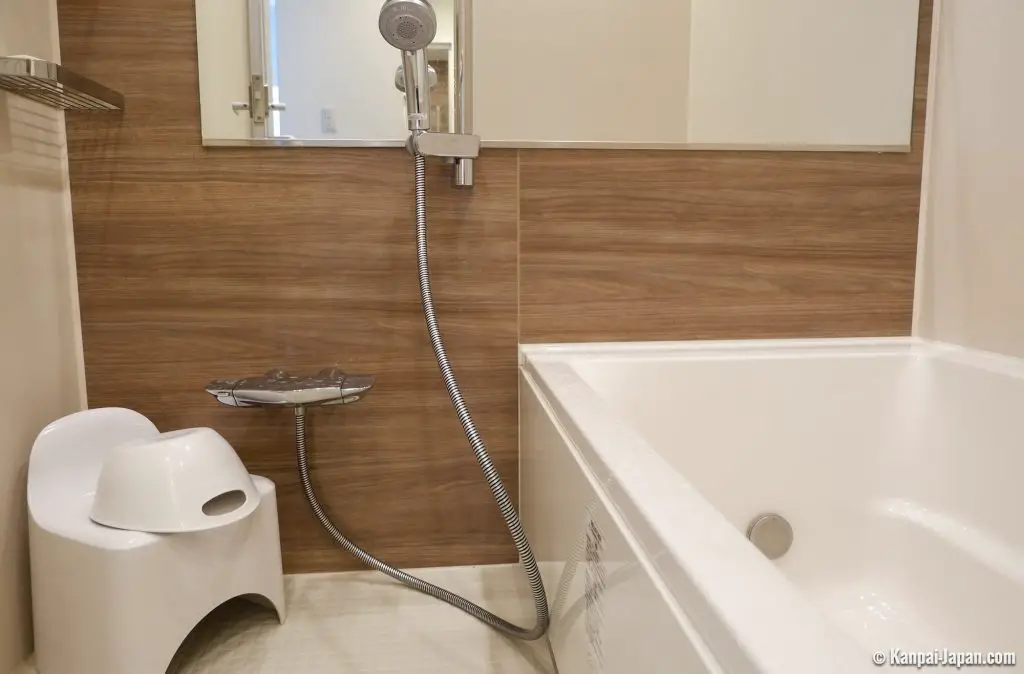
There is a small stool to sit down while washing and also a rain shower overhead for western style showering
Japanese bathtub design
Modern bathtubs can be programmed to be automatically filled with water of a given temperature at a given time, or to heat up the water to a preferred temperature. Some bathrooms even include built-in warmed dryers as well as automatic self-cleaning features.
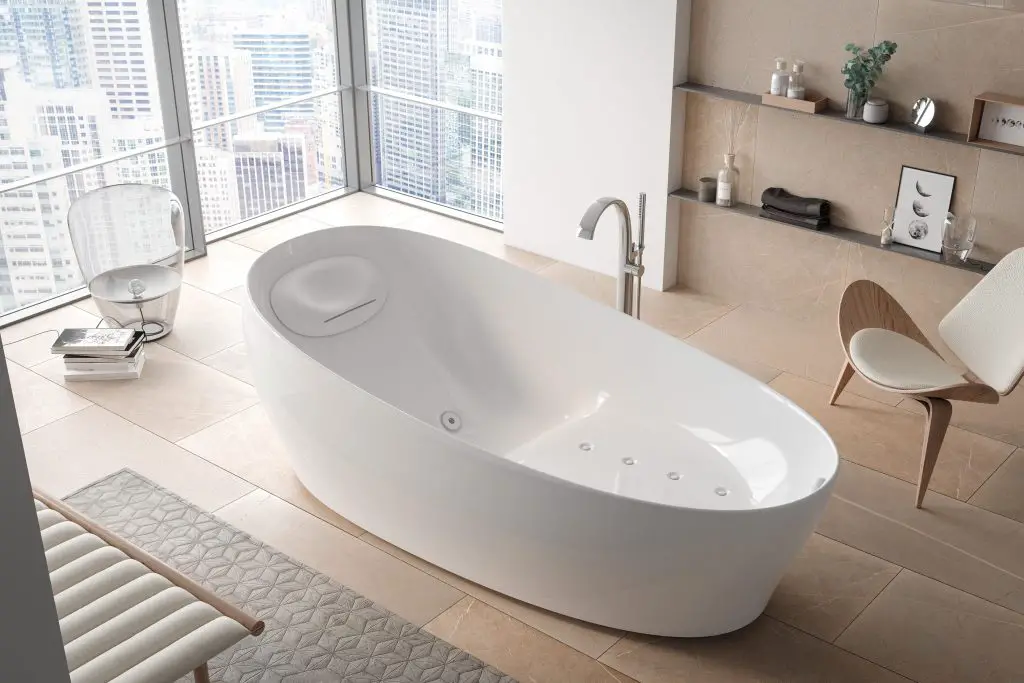
Japanese bathtubs also contain a call button so that you can have a nice glass of tea brought to while relaxing
SEE MORE:
Amazing features about bathing in Japan
-
Spray wand in sink
When entering Japanese bathrooms, have you ever noticed that there is a spray wand in sink? That is a wonderful idea because you can even wash pets or small kids in sink.
-
Shower before you bathe
When bathing Japanese style, you are supposed to first wash yourself thoroughly outside the bathtub. Afterward, you enter the tub, which is used for soaking only. After soaking, leave the tub and clean your body with soap. Make sure that no soap gets into the bathing water. Once you finished cleaning and have rinsed all the soap off your body, enter the bathtub once more for a final soaking.
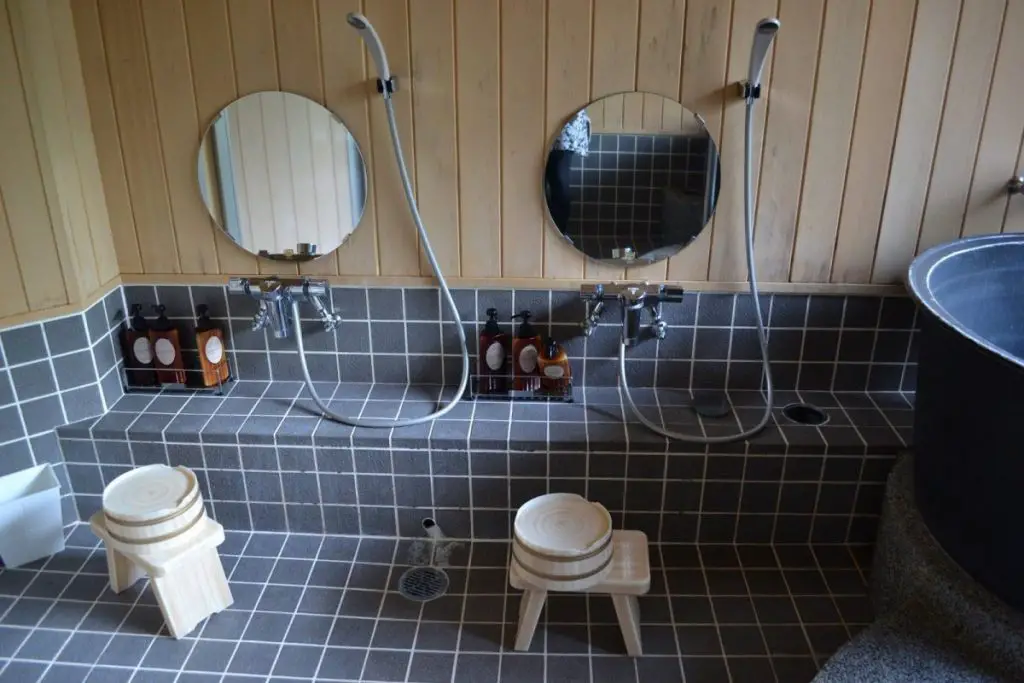
If you are at a hot spring, shampoo, body wash and towels will be provided
-
Accessories of Japanese bathroom
Japanese people traditionally use charcoal soap, massage brushes and clean cloth (long, thick and also held at both ends) for rubbing. While washing, you can sit on a small stool and use a bucket to pour water all over yourself.
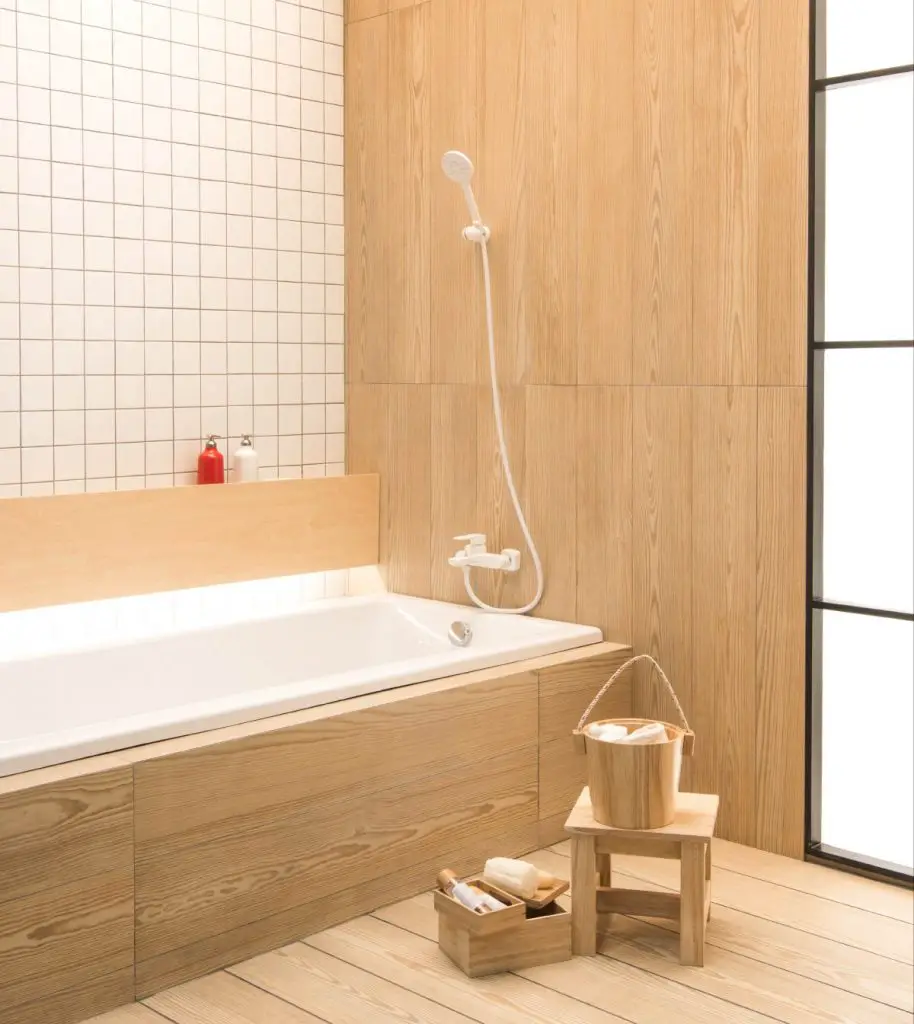
Japan bathing accessories will help you to have a restorative bath
-
Sharing water
It is a tradition to share bathwater among family members, something that Westerners would certainly never ever imagine doing.
After soaking, you leave the bathwater for the next member of the house. So it is important to keep the water clean, which means no washing hair or lathering up in the tub.
-
Saving water in Japanese bathroom design
The Japanese are likewise naturally fantastic at water preservation. They do not stand under a consistent stream of hot water for an extensive amount of time, instead of using a pipe with simply the quantity of water they require to cleanse themselves.
What’s more, many bathtubs come with a pump which you can stick to the washing machines so you can reuse the bathwater for washing clothes.
How to keep Japanese bathrooms clean
Mold is no rarity in Japan, especially in rainy season. So how to sanitate and keep the shower mold-free? Below are some useful tips for you to follow:
- Take advantage of the ventilation fan that will increase the airflow and reduce the chance for mildews to grow.
- Regularly use vinegar spray to wipe out the bacteria that causes mold. If you want to avoid overusing nasty chemicals, non-toxic cleaning products are absolutely your priority.
- Put all of your bath stuffs on a caddy or basket if you don’t have much shelving space.
- Because you have to take your shoes off at the entrance of the house, plastic slippers will help to keep the bathroom clean and prevent wet socks.
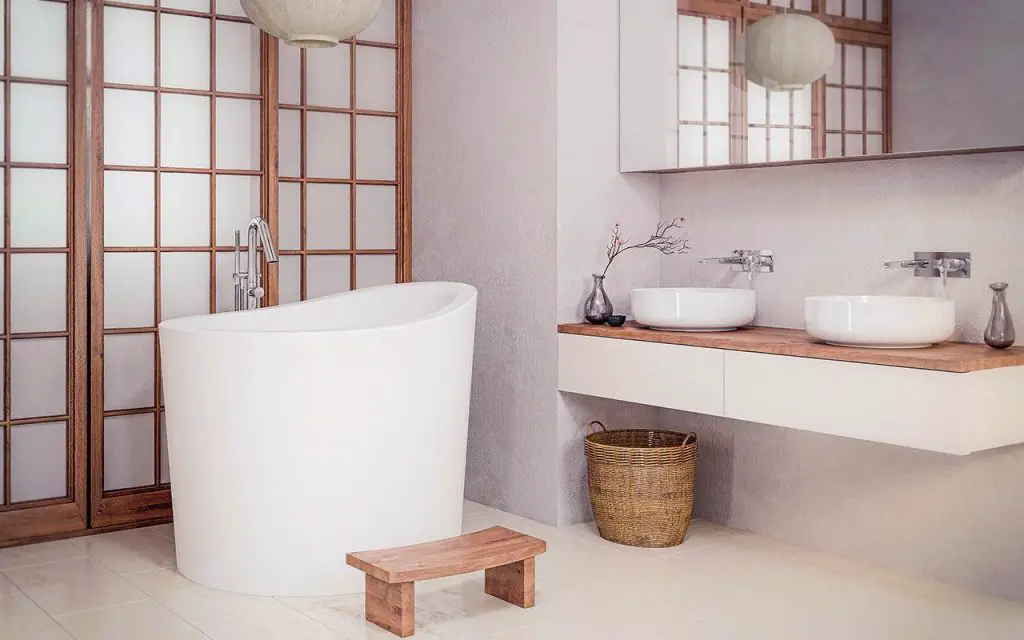
Keep your bathroom as tidy as possible to enjoy your best while showering
Frequently asked questions
1. Why Japanese bathrooms are the best?
- A Japanese bathroom is designed differently from its Western counterparts. There are separate compartments for the bathtub, sink area, and toilet so many people can use it at the same time.
- The Japanese design the bathroom to be a place of rest and entertainment. So you can have water-proof television or tranquil calm music played while soaking in the bathtub.
- Japanese people have reputation for their high-tech applications in life. You have the corresponding control panel installed in the bathroom from which you can adjust everything easily. It’s not surprising that you can control the bath from the kitchen.
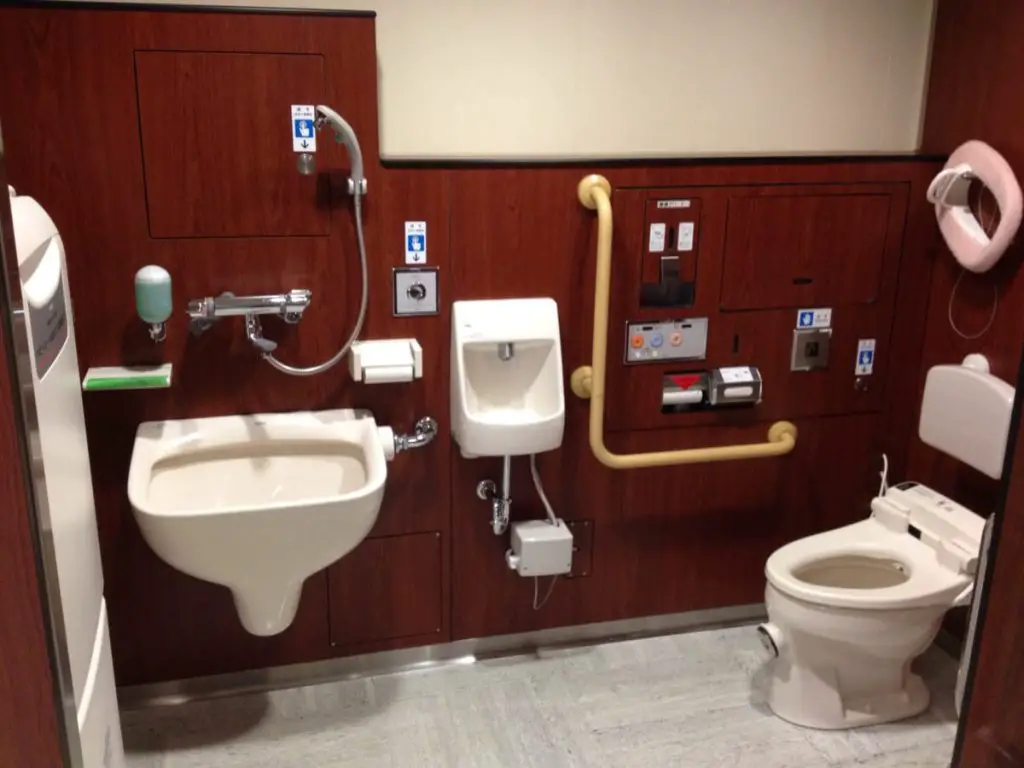
Japanese hi-tech bathrooms bring you the sense of convenience and cleanliness
2. Why are Japanese bathrooms plastic?
Most bathrooms in Japanese homes are “unit-baths” – meaning that the entire bathroom (walls, floors, ceiling, bath, shower, drainage, and door) are sold as a single product or ‘unit’. These prefabricated rooms are mostly made from molded plastic (for waterproof purpose) but the sophistication of the products and the technology are still impressive.
3. What are public bathrooms like in Japan?
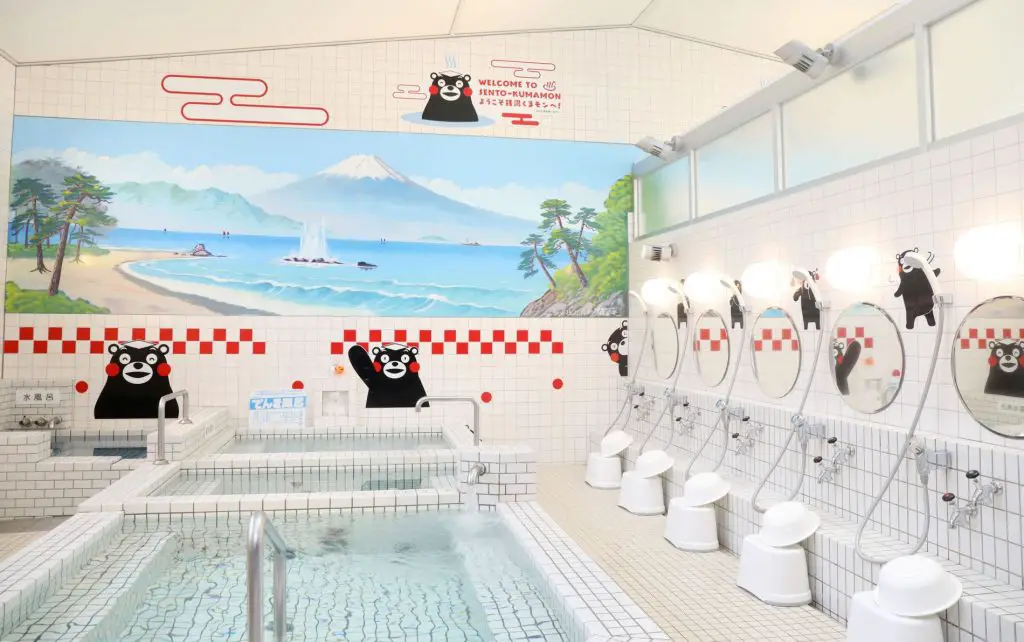
Public bathrooms are usually readily available all over Japan
It sounds weird that people being naked and having bath in sharing space but yes, this kind of place does exist in Japan, which is also called “sento”. Sento is a type of Japanese bathhouse where customers have to pay to get into the bath. The cost varies from 200 – 2000 yen. Click here to get more information about Sento!
Conclusion
The bathroom is as essential as it is underrated though it may not be the first place we inspect when entering a house. Hope you find useful information about Japanese bathrooms in this blog!
Leave below any question you have about Japanese location guide, we’re happy to help!


